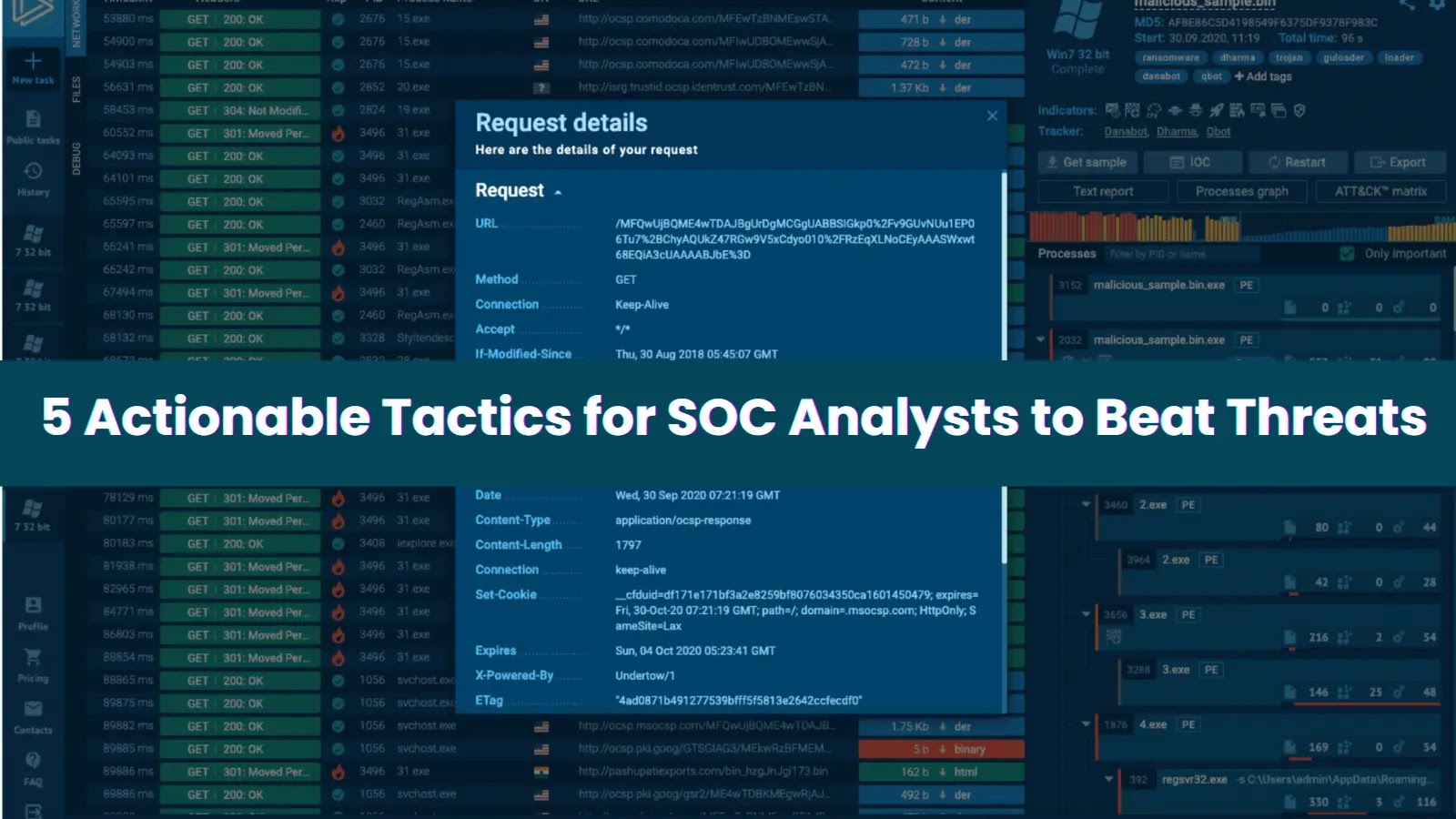Enhancing SOC Efficiency: Five Tactical Approaches to Threat Contextualization
In the dynamic realm of cybersecurity, Security Operations Centers (SOCs) are inundated with a deluge of alerts daily. The challenge lies not just in managing this volume but in discerning which alerts signify genuine threats. Contextualizing these alerts transforms raw data into actionable intelligence, enabling SOC analysts to respond swiftly and effectively.
The Imperative of Contextualization
Alerts devoid of context are akin to puzzle pieces without a reference image. For instance, a flagged IP address might be a benign entity or a malicious command-and-control server. Without context, determining its nature becomes a time-consuming endeavor. Integrating threat intelligence provides the necessary background, allowing analysts to make informed decisions promptly.
Introducing ANY.RUN’s Threat Intelligence Lookup
ANY.RUN’s Threat Intelligence (TI) Lookup serves as a real-time investigative tool, offering immediate insights into various Indicators of Compromise (IOCs) such as domains, IPs, file hashes, and URLs. By harnessing data from over 15,000 SOCs and researchers globally, enriched continuously by ANY.RUN’s sandbox detections, TI Lookup delivers actionable context in mere seconds.
Five Tactical Approaches to Leverage Threat Context
1. Domain Intelligence: From Suspicion to Confirmation
Scenario: An alert indicates a connection to the domain `logrecovery[.]com`.
Without Context: The domain’s legitimacy is uncertain, necessitating manual cross-referencing across multiple platforms.
With TI Context:
– Identified in AsyncRAT and Amadey sandbox executions.
– Linked to active command-and-control infrastructures.
– Associated with information-stealing campaigns and botnets.
Immediate Action: Block the domain at network gateways, label it as a high-confidence IOC, and conduct retrospective analysis to identify any prior connections within network logs.
Significance: Information-stealing malware can exfiltrate sensitive data rapidly. Prompt identification and blocking are crucial to prevent data breaches.
2. Email Attachment Analysis: Recognizing Campaign Patterns
Scenario: A suspicious email attachment titled Electronic_Receipt is detected.
Without Context: The generic filename could represent a legitimate document or a phishing attempt, requiring manual scrutiny.
With TI Context:
– Detected in multiple malware analyses.
– Part of credential-harvesting campaigns.
– Linked to the Tycoon phishing kit, known for bypassing multi-factor authentication (MFA).
Immediate Action: Add the file hash to the SIEM blocklist, inspect egress logs for any systems that may have connected to associated command-and-control domains, and update email filters to capture similar variants.
Significance: The Tycoon phishing kit can intercept user credentials and session cookies, enabling unauthorized access even with MFA in place. Organizations utilizing cloud services are particularly vulnerable.
3. IP Address Correlation: Unveiling Malicious Infrastructure
Scenario: An internal system communicates with the IP address `103.168.67.9`.
Without Context: The IP’s reputation is unknown, necessitating manual investigation.
With TI Context:
– Identified in recent RedLine Stealer malware samples.
– Functions as a command-and-control server.
– Associated with data exfiltration activities.
Immediate Action: Block the IP address across all network devices, initiate a forensic investigation on the communicating system, and monitor for any signs of data exfiltration.
Significance: RedLine Stealer is notorious for harvesting sensitive information. Early detection and isolation are vital to mitigate potential data breaches.
4. File Hash Analysis: Detecting Malicious Executables
Scenario: A file with the hash `49ef9153-94eb-5d05-bac2-19a54738afab` is executed within the network.
Without Context: The file’s nature is ambiguous, requiring sandbox analysis.
With TI Context:
– Recognized as a RedLine Stealer variant.
– Exhibits credential harvesting behavior.
– Communicates with known malicious IPs.
Immediate Action: Quarantine the affected system, remove the malicious file, and conduct a comprehensive scan to ensure no further compromise.
Significance: Identifying and removing malicious executables promptly prevents further infiltration and data loss.
5. URL Analysis: Identifying Phishing Attempts
Scenario: A user clicks on the URL `hxxp://malicious[.]site/login`.
Without Context: The URL’s legitimacy is uncertain, necessitating manual verification.
With TI Context:
– Associated with phishing campaigns.
– Mimics legitimate login pages to harvest credentials.
– Linked to known threat actors.
Immediate Action: Block the URL at the proxy level, alert users to the phishing attempt, and educate them on recognizing similar threats.
Significance: Phishing remains a prevalent attack vector. Educating users and blocking malicious URLs are essential steps in preventing credential theft.
Conclusion
Incorporating context into threat analysis empowers SOC analysts to transition from reactive to proactive defense strategies. Tools like ANY.RUN’s TI Lookup streamline this process, offering immediate, actionable insights that enhance decision-making and fortify organizational security.



